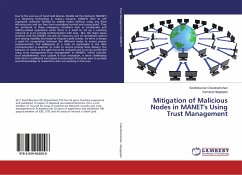
IoT Security using VHDL
Hardware Security
Versandkostenfrei!
Versandfertig in 6-10 Tagen
45,99 €
inkl. MwSt.

PAYBACK Punkte
23 °P sammeln!
Designing robust IoT security solutions using VHDL offers a pathway to hardware-level protection against various threats. VHDL allows developers to implement cryptographic algorithms like AES or RSA directly into the hardware, providing significantly faster and more energy-efficient encryption compared to software implementations. Furthermore, VHDL can be used to create secure boot mechanisms that verify the integrity of firmware during startup, preventing unauthorized code execution. Implementing access control mechanisms and authentication protocols in hardware using VHDL also strengthens se...
Designing robust IoT security solutions using VHDL offers a pathway to hardware-level protection against various threats. VHDL allows developers to implement cryptographic algorithms like AES or RSA directly into the hardware, providing significantly faster and more energy-efficient encryption compared to software implementations. Furthermore, VHDL can be used to create secure boot mechanisms that verify the integrity of firmware during startup, preventing unauthorized code execution. Implementing access control mechanisms and authentication protocols in hardware using VHDL also strengthens security by reducing the attack surface vulnerable to software exploits. By leveraging the capabilities of VHDL, developers can create tamper-resistant and highly secure IoT devices that are difficult for malicious actors to compromise, ultimately fostering trust and reliability within connected ecosystems.












